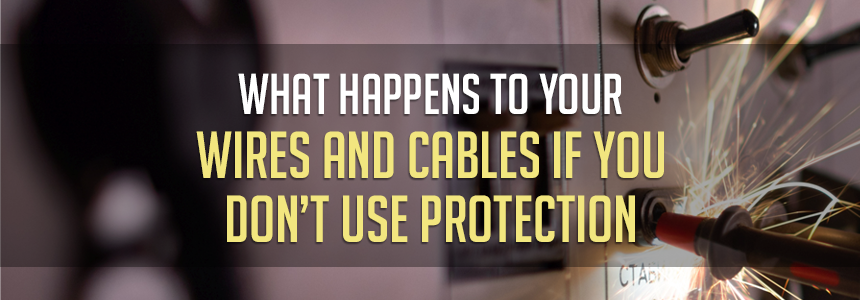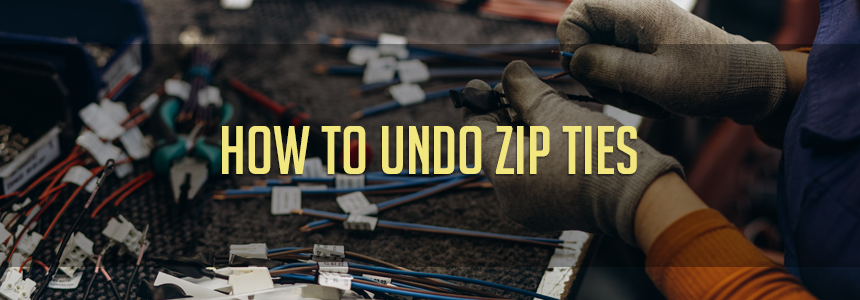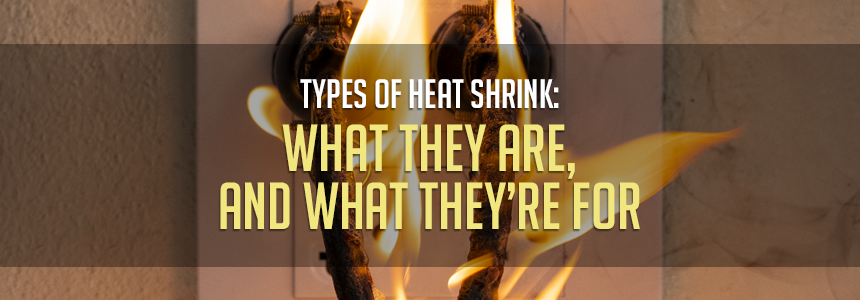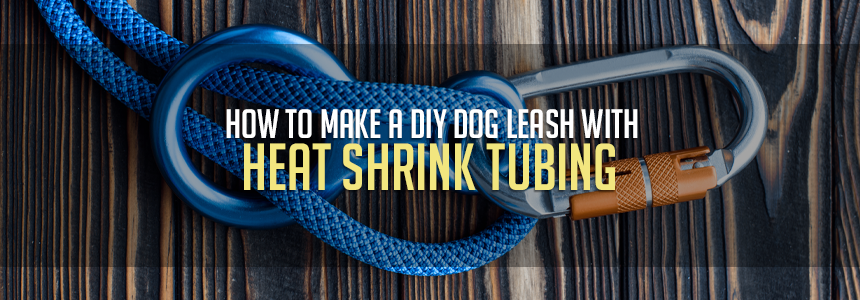What Happens to Your Wires and Cables if You Don’t Use Protection

People often denote that wires and cables are the same thing but in fact they are quite different. Wires are electrical conductors that transmit voltages that, in turn, become electric current. Whereas a cable is a group of wires wrapped in a shield. Originally, the term cable referred to a nautical line of multiple ropes to anchor ships. But in the electric field, it is used to carry high voltage electrical currents. Wires are used locally and for short distances, but cables move electrical currents of high voltage from one place to another.
The primary difference between wires and cables is that a wire is a single conductor, whereas the cable is a group of conductors. They can be made of copper or aluminum material. In this article, we will discuss how heat shrink tape and tubing can protect these connections, and what happens to them if they aren’t.
What is heat shrink tape and tubing?
Heat shrink tape is made of heat melting adhesive-lined polyolefin tape and is used for repairing cables and wires. When heat is applied, it will shrink to about one-third from its original size. This tape protects sleeves that cover power cable joints. It is available in various sizes, colors, and qualities to meet the needs of all types of cable wiring.
Heat shrink tubing on the other hand is a shrinkable plastic tube that is commonly used to insulate open wires providing protection from various environmental factors like liquids, chemicals and pressure. It is a versatile plastic layer that can be applied to cabling by electricians, professionals and hobbyists for several purposes. It is used to repair damaged portions of cables, protecting it from dust and moisture, etc. Heat shrink tubing is made of polyolefin, which shrinks radially when heated (also known as shrink sleeves).
The most common ratios of heat shrink tubing are 2:1 and 3:1, the greater the size variation, the larger the shrink ratio. It is available in different colors for easy color coding. It becomes rigid when the heat is applied. To apply, you must ensure that the tubing has sufficient expandability by comparing its diameter and apply continuous heat until the wrap has tightly recurred. Heat shrink tubes are available in various materials like polyolefin, PVC, polytetrafluoroethylene, fluorinated ethylene, and elastomeric heat shrink tubes.
What is heat shrink tape used for?
Like heat shrink tubing, heat shrink tape is also used for insulation. It can also be utilized to repair wires, cables, tubing, pipes, and much more. It can also stop electrical currents from passing to other cables, which could prevent short-circuiting. Good quality heat shrink tape can sustain temperatures up to 80°C.
What is heat shrink tubing used for?
In comparison to heat shrink tape, heat shrink tubing can often be more applicable. Heat shrink tubing is a waterproof and economical choice, especially in the industrial field. It can be used to keep the cables together in your car, or in the electrical system inside your boat. Other examples include but are not limited to:
- Aerospace, military logistics, and motor transport.
- High heat or areas with potential chemical contamination.
- Fiber optic cables are very susceptible to melting if exposed to high temperatures, so heat shrink tubing is the best option to help protect them.
- It is available in different materials that can withstand cold and warm climates, ranging from the likes of the Arctic to near the equator.
Hazards associated with wires and cables?
A cable protection solution keeps cables together and helps reduce the risks of trips and slips. It will keep wires and cables free from water damage, harmful chemicals that may cause fire or explosion. It also protects from electrical short-circuiting. Cable protection is essential and essential in many industries like:
- Health and safety: In manufacturing units, the worker's health and safety are essential and also protected by labor laws. The protection of wires and cables is a massive contributor in this regard. Cable protection measures reduce the risks to workers' lives and keep from damages due to electrical shortages.
- In many cases, long-distance cables are generally exposed to wildlife which can lead to damage caused by these animals including scratches and tears. Therefore to protect the expensive cable from animals, it must be covered with materials like heat shrink tubing.
- Exposed cables are not only vulnerable to animals, but poor weather conditions can also severely affect them. The extreme temperature, heavy snow, and rain can lead to premature dents and cracks on the cable. This weathering may cut the communication line. To replace the whole cable would be expensive, so it is better to protect the wires using heat shrinking tape or tubing.
- Unprotected cables may also lead to even more extensive damage of equipment. By harming the current supply, you can damage the pieces of equipment and their efficiency.
Some sensitive electrical and phone cables can be a challenge to the organization. The messy line sometimes attracts pests, little creepers, which damage the wires. The wire or cable protectors are the material that can solve this problem. Wire protectors will prevent accidents inside your workplace. This protection can help to maintain the appearance of your workplace or home as well. The wires and cable can be preserved for a long time. These protectors can make wires manageable. Identification of wires and cables will be easy. The most crucial feature of wire and cable protection is the safety of the workers and premises.
Want to learn more?
Hopefully, this guide has helped you understand all you need to know when protecting your wires and cables. Set up an account or log in to put in an order. If you have additional questions, visit our learning center or FAQs. Or you can contact us here with questions or to receive a sample.














